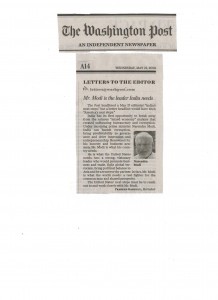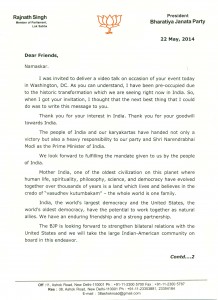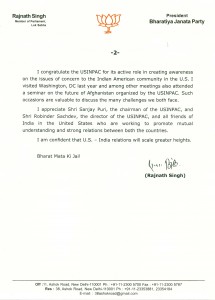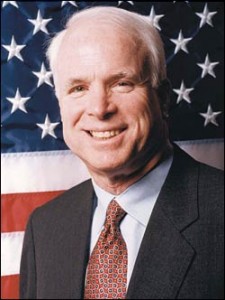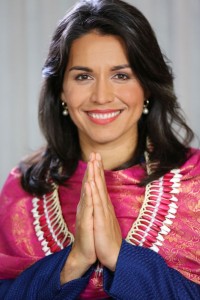–B. Ramesh Babu*
Absorbed in what could prove to be a historic election centered on the crucial issues of development and governance at home, country’s external relations and foreign policy were pushed onto the back burner. While this is understandable in view of the mess we are in today (economic slowdown, the cascade of massive scandals and policy paralysis), it is time for the nation’s top leadership and concerned citizens to turn their attention to the foreign policy agenda awaiting the next Government to be sworn in soon. Many unresolved old issues and several new challenges demand urgent and innovative attention.
The most important among them is to put the country back on the track of high and sustained economic growth. Sonia-Singh diarchy destroyed the investment climate so crucial for the promotion of growth. Crony capitalism and policy flip-flops of the UPA Government proved to be a deadly combination that undermined the growth curve inherited from the NDA and carried forward from 2004-2009. Coal, 2G and Common Wealth Games are classic examples of government playing favourites around tenders and looking the other way as the inevitable loot of the exchequer followed. On the other side, Manmohan Singh’s pro-business inclinations were countered by Sonia inspired NAC’s populist predictions. Furthermore, the untenable policy of “retroactive taxation” and maligning respected business leaders for no reason did not help. The investment climate was vitiated so badly that it adversely affected economic growth in two ways, which tended to reinforce each other. The inflow of FDI decreased to a trickle. Projects in the pipeline did not materialize and new ones were not taken up. Moreover, the domestic capital flowed out. Many Indian business houses found it more profitable to invest in foreign countries rather than doing business at home. Some of them said so in public. It is nobody’s plea that the benefits of growth should not be shared more equitably. But, the misconceived and manipulative “politics of inclusive growth” culminated in precipitous decrease in growth.
Consequently, the foremost foreign policy priority before the next Government at the centre is a radical revision of the nation’s foreign economic policy. At the same time every care should be taken to avoid the trap of corporate capitalism. What Indian business and industry want is clarity, certainty, coherence in economic policies and cut down on the red tape. That certainly is not asking for too much. Restoration of rapid and sustained economic growth at home is the most fundamental, enduring, and overarching national purpose at this time and foreign policy is one of the key instruments towards that end.
DETERRING THE DRAGON
If we now turn to the other more important and continuing challenges confronting the country, the immediate tasks on hand are two: (1) deterring the aggressively expansionist China and (2)countering terrorism emanating from Pakistan. The fact that the two collude against us adds to the gravity of the security threat facing the country. In dealing with the border dispute with China, it is crucial not to forget even for a moment the massive fact that China is the most dangerous and proximate enemy on the border. We have no choice but to constantly expand and upgrade our defense capabilities in the Himalayan region. We must also recognize and digest the reality that China enjoys the strategic advantage of occupying the higher altitude regions in the northern mountains. Therefore, to deter the dragon we need to have a more powerful nation on our side. Only thing China fears is our proximity to the U.S. It is an absolute must for us to keep the India-U.S strategic partnership intact all the time and ensure the forward momentum on this front does not slacken at any time.
Ironical as it may seem, the latest phase of aggressive expansionism of China in the South China Sea and activisation of the hitherto dormant dispute with Japan over the Senkaku/Diaoyu islands opens up a new opportunity for Indian diplomacy. Each passing week brings to the fore, instances of China’s “coercive diplomacy” and use of force to back its territorial claims. As recently as on 9th March 2014, China’s coastguard prevented the vessels of Philippines from taking supplies to her marines on a shoal in the disputed Spartly Islands. Philippines lodged a formal protest with the International Court of Justice (ICJ). But everyone knows that the dragon is not likely to heed to any international ruling on this score. Consequently, Philippines signed a new military agreement with the U.S during President Obama’s visit to the country last month (April 2014). This is a noteworthy reversal of the post cold war trend of Asian nations distancing themselves from the mutual security agreements with the U.S. The Soviet threat of the cold war era receded. But, now the Chinese threat looms large in the region. A return to the American military fold seems to be the only credible alternative available to the ASEAN countries.
In any international effort to contain Chinese expansionism, Japan will be a willing and able partner. The trigger is the escalation of the dispute over the Senkaku/Diaoyu Islands by China. Under the patriotically popular and dynamic leadership of Prime Minister Abe, the country is determined to counter the dragon’s designs at all costs. He is leading economic revival at home successfully and seeking a proactive role in regional, international relations and global affairs. The next Government of India should utilize this opportunity to the full and promote a new U.S-Japan-India strategic partnership with a view to curb Chinese expansionism. The inherited qualms in this regard should be openly discarded. It is very important to convey the message to China that India does not want another war in the Himalayas. But, at the same time, India is determined to do everything possible and a bit more to curb Chinese hegemony in the region and beyond. The most effective first step in this direction is to build a credible security partnership with the U.S and Japan. Then India should go on to construct a coalition of concerned countries to deter Chinese aggression.
It is equally important that the top political leadership in the next Government understands that such a proactive security approach does not in any way contradict our established policy of co-operation with China on key global issues on the North-South divide. That will continue on the basis of mutual benefit and to help the developing countries in facing the hegemony of the West on the issues of trade, tariffs, investments, farm subsidies and global warming etc.
It is high time that India sheds once for all the habit of undue deference to China on the border issue. A brave and confident policy of tit-for-tat on the border and building a coalition of concerned countries to deter Chinese aggression at the global level has to be the new creative policy mix India needs in the near and long term future. If in the interim, Chinese choose to be “soft” on the border, it should be seen as the outcome of the new double edged policy. The security coalition part of the new policy mix should not be slackened at all. China has territorial and maritime jurisdictional disputes with over 20 countries around the world. It is crucial for regional and world peace that China is forced to abandon her aggressive expansionism and her over clever policy of tackling each of her target nations individually and in isolation. This calls for a consistent and sustained approach over a long stretch of time, say for over five decades or more!
DEALING WIH PAKISTAN
The next important item on the foreign policy agenda for the next Government is to come to grips with the complex and almost intractable bilateral relationship with Pakistan. The early euphoria of Nawaz Shariff becoming the Prime Minister ended rather quickly and the seven decade long burden of mutual suspicion and distrust reasserted itself. There is no point in blaming Manmohan Singh’s sentimental and over personalized approach in the matter. Progress in the bilateral relations is possible only when the cross-border terrorism stops and the perpetrators of the mayhem in Mumbai are punished under Pakistani Laws. Pakistan’s internal troubles are unlikely to alter the country’s policy towards India. One of the first things India should do is to stop declaring that we are in favour of the unity and territorial integrity of Pakistan. Its unity or internal chaos is operationally irrelevant to the nature of the bilateral relationship.
Indian political and military leadership should carefully re-examine our policy of tackling cross-border terrorism emanating from Pakistan. In international law, “hot pursuit” of intruders and criminals is allowed. Implications and consequences of such a new approach to Pak based terrorists should be examined by the next Government carefully and objectively. But the intention to take such a re-look at the conventional approach in place for so many decades should send a message to the other side. The Pakistani reiteration ad naseum that they have no control over the Jehadi groups and do not aid and abet them could be tested in the bargain. Freedom should be given to the top military leadership to go after the terrorists in “hot pursuit”. At the same time, the limited operation should not be allowed to escalate into a larger military conflict in Jammu and Kashmir or in Gujarat (Rann of Kutch). That Pakistan and India have nuclear weapons is a paramount deterring factor. But it is high time for us to find ways and means of effectively countering the long established treacherous and murderous Pak policy of “bleeding India by thousand cuts”. A certain degree of controlled escalation may not be as “dangerous” as assumed. This may also “force” U.S and other nations to realize that at last India means business and thereby decide to lean on Pakistan more firmly. However, let me make it absolutely clear that I am not advocating the policy of hot pursuit right away. The option should be carefully examined and all concerned should be aware that India is seriously considering the option as a weapon of last resort. After all, the people are fed up on the state of “no end in sight” on this front!
At the same time, the positive dimensions of doubling and tripling the two way trade and expanding the people to people contacts between the two neighbours should be kept in mind. In our economic and commercial relations with Pakistan as well as all the other neighbours in South Asia our policy should not insist on strict mathematical reciprocity. Being a vastly larger economy and technologically better endowed, India should give “unilateral concessions” in the areas of trade and commerce and economic cooperation.
Failure to implement the agreements with Bangladesh on the sharing of Teesta River waters and adjustment of enclaves along the border are examples of inept and ineffective leadership at the centre. The inadequacies and inconsistencies in our relationship with Sri Lanka are in the same category. The next Government at the centre should be strong enough to overcome the pulls and treasures of regional subedars.
INDIA AS AID GIVER
Whenever the topic of foreign aid comes up for discussion India looms large as an aid receiving country. However, the other side is and “untold story.” This is one area of quiet achievement that deserves to be widely publicized at home and abroad. In the global arena today India is a significant donor of foreign economic and technical aid. It has contributed more than its share of technical and development assistance to about 125 countries around the world. India’s accumulated foreign aid over the last three decades is about 2.5 billion US dollars. This figure does not include the huge assistance given to Afghanistan. Almost 60 per cent of the aid is devoted to training civil servants, engineers, and managers of public sector units in many countries as per the policies and priorities of the recipient nations. What is highly pertinent is the fact that Indian assistance is demand driven, appropriate and best suited to the recipient country. The most welcome feature of Indian assistance is that it was provided at a fraction of the cost of the aid from the rich and advanced countries of the west. At the 2011 India-Africa Forum Summit, for example, India pledged a 5 billion US dollars worth of aid in the form of concessional loans. India’s foreign aid programme is aptly called Development assistance Partnership (DAP). In addition India provides a very large number of fellowships and scholarships to students from developing countries to study in institutes of technology and universities.
However, the “untold story” has developed fault lines as it gathered momentum and expanded in size and scope. Several Ministries and major Departments at the centre have been providing assistance to many countries in their own separate ways. There is no coordination among them. In policy terms, a more serious inadequacy is the complete lack of a coherent doctrine guiding the myriad activities spread around the world. Often, the Ministry of External Affairs is not even in the picture in the aid programmes and projects of the other Ministries. Foreign aid should be a planned constituent and an important instrument of the nation’s foreign policy. The next Government must attend to this lacuna soon after it settles down in Delhi.
COCLUSION
Finally, there is urgent need to greatly expand our economic and political relations with Latin American countries, especially with Cuba, Brazil, Mexico, Venezuela and Argentina. This late starter has immense potential and needs to be harnessed with great care and imagination.
In conclusion, the foreign policy agenda for the next Government is to keep its focus on the large picture of U.S-India-Japan trilateral equation to ensure our strategic security and quickly restore a growth friendly climate at home to promote domestic and foreign investment on large scale. The image of a central government afflicted with policy paralysis, famous for ineptitude, ineffectiveness and unprecedented corruption has to be erased once and for all. We need a strong, effective, and clear headed leader at the helm of affairs at home and abroad.
Dr. Babu is a specialist in International Relations and Foreign Policy. Currently he is a Visiting Professor in the Department of Political Science at the University of Hyderabad. Formerly, he was the Sir Pherozeshah Mehta Professor of Civics and Politics at the University of Bombay.

